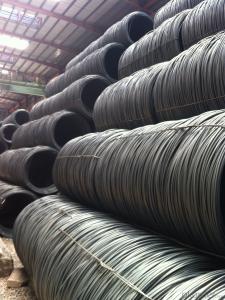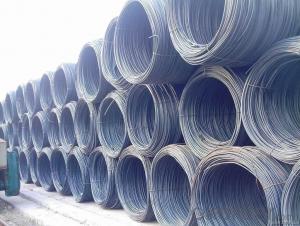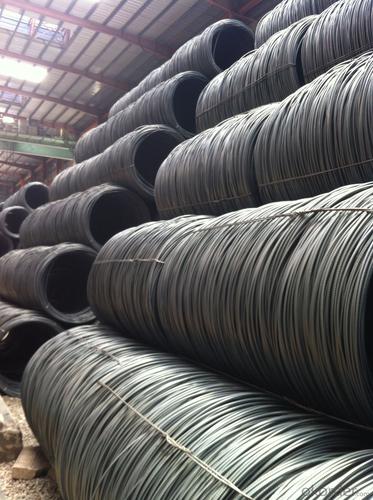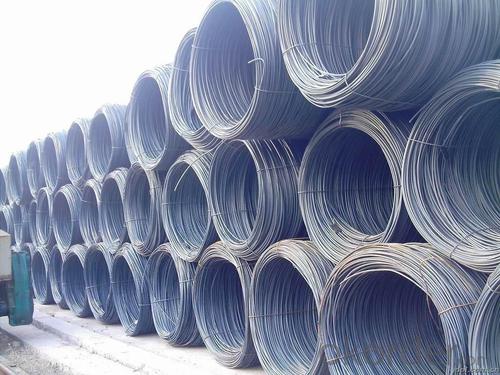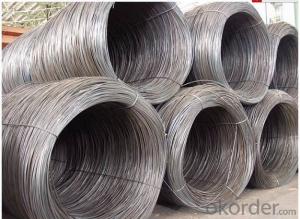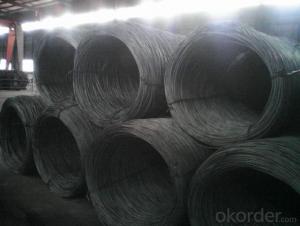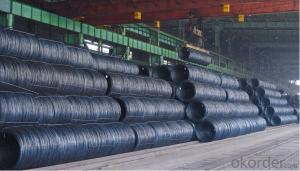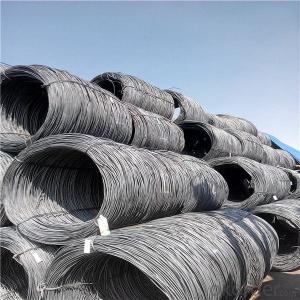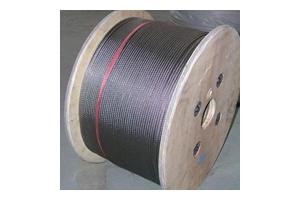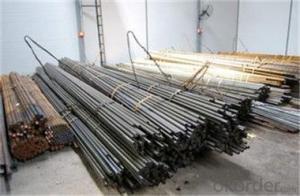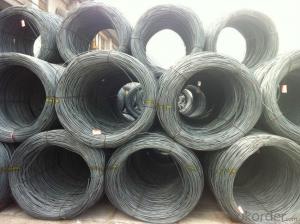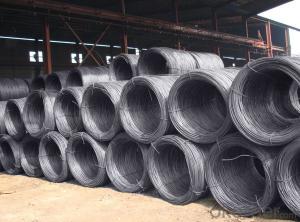Hot Rolled Low Canbon Wire Rods with Good Price
- Loading Port:
- Tianjin
- Payment Terms:
- TT OR LC
- Min Order Qty:
- 25 m.t
- Supply Capability:
- 10000 m.t/month
OKorder Service Pledge
OKorder Financial Service
You Might Also Like
OKorder is offering wire rods at great prices with worldwide shipping. Our supplier is a world-class manufacturer of steel, with our products utilized the world over. OKorder annually supplies products to European, North American and Asian markets. We provide quotations within 24 hours of receiving an inquiry and guarantee competitive prices.
Product Applications:
After hot-rolled the products shaped into coil and delivery as finished product, including round, square,rectangular, hexagonal and so on. Since most of the products are round, it is generally called wire rod. Carbon steel wire rod is widely used in construction and manufacturing. Carbon steel wire rod is mainly used for reinforcement of reinforced concrete and welded structure or reprocessed (roberts , nail, etc.) materials, especially used to produce wire drawing, welding electrode, nails, spring, electronic, precise machinery parts and so on.
Product Advantages:
OKorder's Wire rods are durable, strong, and resist corrosion.
Main Product Features:
· Premium quality
· Prompt delivery & seaworthy packing (30 days after receiving deposit)
· Corrosion resistance
· Can be recycled and reused
· Mill test certification
· Professional Service
· Competitive pricing
Product Specifications:
Manufacture: Hot rolled
Grade: SAE1006-SAE1018
Certificates: ISO, SGS, BV, CIQ
Packaging: Export packing, nude packing, in coils
Grade | Chemical Composition (%) | |||||
C | Mn | S | P | Si | B | |
SAE1008B | 0.10max | 0.32max | 0.045max | 0.040max | 0.30max | 0.0008min |
Mechanical properties | ||||||
Yield strength(N/mm2) | Tensile strength(N/mm2) | Elongation (%) | ||||
≥195 | 350-380 | ≥32 | ||||
FAQ:
Q1: Why buy Materials & Equipment from OKorder.com?
A1: All products offered byOKorder.com are carefully selected from China's most reliable manufacturing enterprises. Through its ISO certifications, OKorder.com adheres to the highest standards and a commitment to supply chain safety and customer satisfaction.
Q2: How do we guarantee the quality of our products?
A2: We have established an advanced quality management system which conducts strict quality tests at every step, from raw materials to the final product. At the same time, we provide extensive follow-up service assurances as required.
Q3: How soon can we receive the product after purchase?
A3: Within three days of placing an order, we will begin production. The specific shipping date is dependent upon international and government factors, but is typically 7 to 10 workdays.
Q4: Can stainless steel rust?
A4: Stainless does not "rust" as you think of regular steel rusting with a red oxide on the surface that flakes off. If you see red rust it is probably due to some iron particles that have contaminated the surface of the stainless steel and it is these iron particles that are rusting. Look at the source of the rusting and see if you can remove it from the surface.
Images:
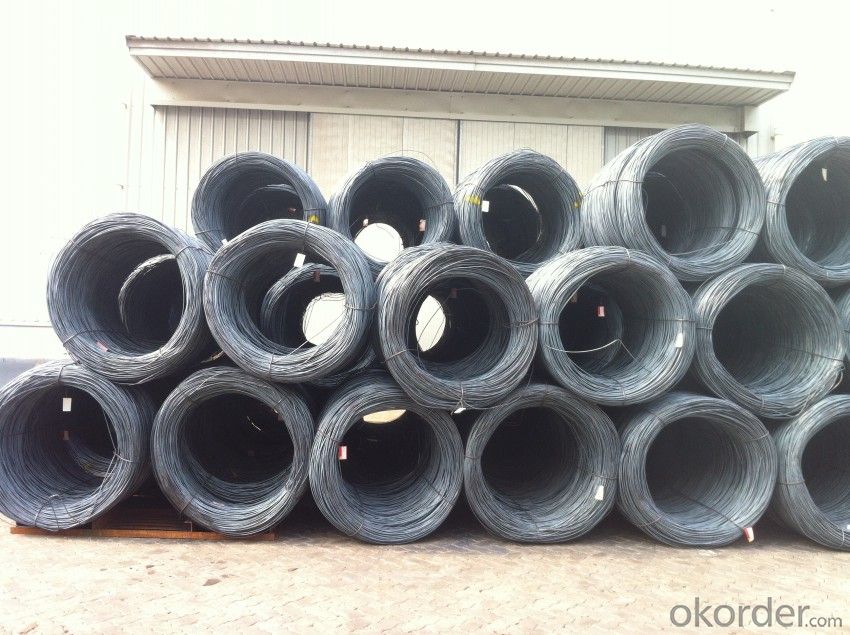
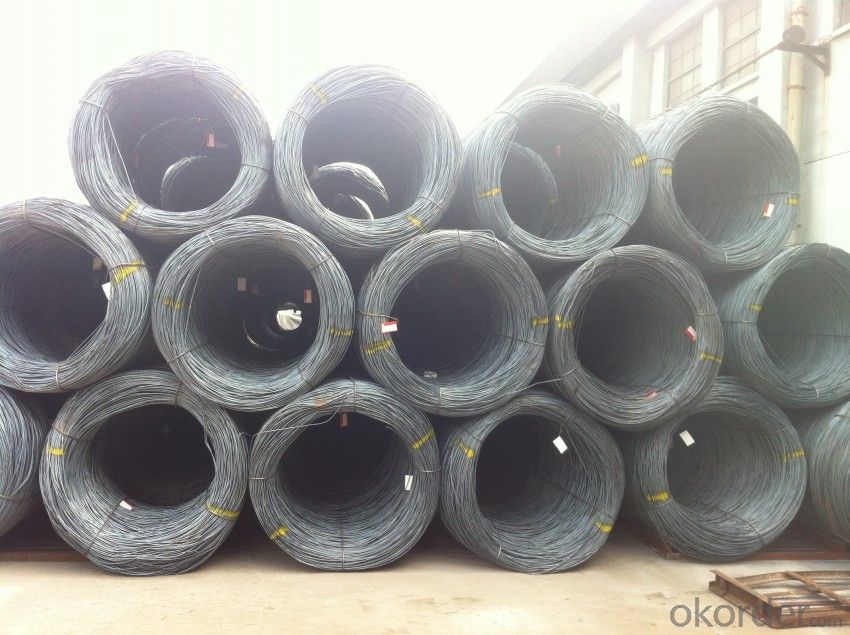
- Q: How is steel wire rod used in the manufacturing of wire for solar panels?
- Steel wire rod is used in the manufacturing of wire for solar panels as it provides strength and durability to the wires. The steel wire rod is first drawn into thin strands and then coated with a protective material to prevent corrosion. These wires are then used in the construction of solar panels to connect the photovoltaic cells and carry the electrical current generated by them.
- Q: How are steel wire rods used in the manufacturing of bicycle spokes?
- Bicycle spokes heavily rely on steel wire rods, which are pivotal in their production. Typically, these wire rods are crafted from top-notch steel and undergo a series of processes to attain the desired strength and flexibility required for spokes. To commence, meticulous selection and inspection of the steel wire rods are carried out to identify any imperfections or defects. Once the quality check is completed, the rods undergo a thorough cleaning and straightening process to ensure they are devoid of any debris or bends that may jeopardize their structural integrity. Subsequently, the wire rods are precisely cut into lengths that are determined based on the specific measurements required for the bicycle spokes. These measurements are typically based on the size and design of the bicycle wheel. Following the cutting process, the wire rods undergo a crucial procedure called swaging, wherein the diameter of the rod's ends is reduced. This swaging process is of utmost importance as it facilitates the creation of a tapered shape that allows for effortless insertion into the hub and rim of the bicycle wheel. Upon completion of the swaging process, the wire rods are then threaded at one end. This threading is indispensable as it enables the attachment of the spoke nipple, which connects the spoke to the wheel rim. Lastly, the wire rods are treated with a protective coating, such as zinc plating, to enhance their corrosion resistance and ensure their durability. This coating not only increases the longevity of the spokes but also adds an aesthetic appeal. In conclusion, steel wire rods play an indispensable role in the manufacturing of bicycle spokes. Through the selection, cleaning, straightening, cutting, swaging, threading, and coating processes, spokes that are strong, flexible, and corrosion-resistant are created. These spokes are a vital component in ensuring the structural integrity and smooth operation of bicycle wheels.
- Q: What are the different quality control measures for steel wire rod production?
- There are several quality control measures implemented during steel wire rod production. These include regular inspection of the raw materials used, such as the steel billets, to ensure they meet the required specifications. In-process inspections are conducted at various stages of production to check for any defects or deviations from the desired dimensions and chemical composition. Testing is also done to assess the mechanical properties of the wire rod, including tensile strength, elongation, and hardness. Additionally, surface inspections are carried out to detect any surface defects or imperfections. Overall, these quality control measures help to ensure the production of high-quality steel wire rods that meet industry standards and customer requirements.
- Q: How is steel wire rod used in the manufacturing of wire forms for material handling?
- Steel wire rod is used in the manufacturing of wire forms for material handling as it provides the necessary strength and durability required for handling heavy loads. The wire rod is first processed through various shaping and forming techniques, such as bending, cutting, and welding, to create the desired wire forms. These wire forms are then incorporated into material handling equipment such as baskets, racks, hooks, and frames to safely and securely hold and transport materials. The high tensile strength of steel wire rod ensures that the wire forms can withstand the stress and strain of material handling operations, making it an essential component in this manufacturing process.
- Q: How is steel wire rod used in the manufacturing of wire harnesses?
- Steel wire rod is used in the manufacturing of wire harnesses as it serves as the primary material for the conductive wires within the harness. The wire rod is first drawn into the desired diameter and then processed further to remove any impurities or surface defects. These high-quality wires are then twisted, braided, or insulated to create the necessary configuration for the wire harness, providing the required strength, flexibility, and electrical conductivity. Overall, steel wire rod plays a crucial role in ensuring the durability and performance of wire harnesses in various industries, including automotive, aerospace, and electronics.
- Q: How is steel wire rod used in the production of wire mesh filters?
- Steel wire rod is used in the production of wire mesh filters as it serves as the primary material for creating the mesh structure. The wire rod is first drawn into thin wires of varying diameters, which are then woven or welded together to form the mesh pattern. This mesh acts as a physical barrier, allowing liquid or gas to pass through while filtering out impurities or particles. The strength and durability of the steel wire rod ensure the longevity and effectiveness of the wire mesh filters in various applications such as industrial filtration, automotive filters, or even in household appliances.
- Q: How is steel wire rod used in the manufacturing of wire for fishing nets?
- Steel wire rod is essential in the manufacturing of wire for fishing nets as it serves as the primary material for producing the wire. The wire rod is initially processed through a series of drawing and annealing processes to achieve the desired diameter and strength. This drawn wire is then further processed, such as being twisted or braided, to form the intricate mesh structure of the fishing net. The high strength and durability of steel wire rod ensure that the resulting wire can withstand the tension and pressure exerted during fishing, making it an ideal material for manufacturing fishing nets.
- Q: How is steel wire rod used in the production of wire mesh baskets for industrial applications?
- Steel wire rod is a crucial component in the production of wire mesh baskets for industrial applications. The wire rod serves as the primary raw material from which the wire mesh is created. To manufacture wire mesh baskets, the steel wire rod is first drawn through a series of dies to reduce its diameter and increase its length. This process is known as wire drawing and results in a long, continuous wire that is thinner and more malleable than the original rod. The drawn wire is then fed into a machine that weaves it into a mesh pattern, creating a flexible and sturdy structure. The size of the mesh can vary depending on the specific requirements of the application. Once the wire mesh is formed, it is typically cut into the desired shape and size to create the basket. The wire mesh can be easily manipulated and bent into various configurations, making it ideal for constructing baskets with specific dimensions and designs. The steel wire rod used in the production of wire mesh baskets is chosen for its high strength and durability. Industrial applications often require baskets capable of withstanding heavy loads or harsh environments, and steel wire provides the necessary strength and resilience. Furthermore, the wire mesh structure allows for excellent visibility and airflow, making it suitable for applications such as storage, transportation, and handling of various industrial goods. It provides a secure containment while allowing easy inspection and ventilation. In conclusion, steel wire rod is an essential material in the production of wire mesh baskets for industrial applications. Its versatility, strength, and durability make it an ideal choice for creating baskets capable of withstanding demanding conditions and effectively storing and transporting goods.
- Q: How is steel wire rod used in the manufacturing of wire rope grilles?
- Steel wire rod is used in the manufacturing of wire rope grilles as it serves as the raw material for creating the individual wire strands that make up the rope. The steel wire rod undergoes various processes such as drawing, stranding, and coating to form the strong and durable wire strands, which are then twisted together to create the wire rope grille.
- Q: How does the elongation of steel wire rod vary with different wire drawing processes?
- The elongation of a steel wire rod can differ depending on the particular wire drawing process utilized. Wire drawing, a metalworking process that involves pulling a metal wire rod through a series of dies to decrease its diameter and increase its length, can be influenced by various wire drawing processes, such as cold drawing or hot drawing. The elongation of the steel wire rod tends to be greater in hot drawing compared to cold drawing. Hot drawing involves heating the wire rod and then pulling it through the die, which softens the steel and makes it more ductile and easier to deform. Consequently, the wire rod can undergo more elongation without breaking or fracturing. In cold drawing, the steel wire rod experiences less elongation due to its lower ductility at room temperature. The cold drawing process may necessitate multiple passes through different dies to achieve the desired reduction in diameter and increase in length. However, the overall elongation may be relatively lower compared to hot drawing. Furthermore, factors such as the reduction ratio, die design, lubrication, and speed of the wire drawing process can also impact the elongation of the steel wire rod. Higher reduction ratios generally lead to greater elongation. Appropriate die design and lubrication can minimize friction and enhance the wire's ability to elongate. The speed of the wire drawing process can also affect elongation, as excessive speed can cause tension and decrease elongation. In summary, the elongation of a steel wire rod varies depending on the wire drawing process employed. Hot drawing typically allows for greater elongation due to the increased ductility of the steel at higher temperatures, while cold drawing may result in relatively lower elongation. Various process parameters and conditions, such as reduction ratio, die design, lubrication, and speed, also play a significant role in determining the elongation of the wire rod.
Send your message to us
Hot Rolled Low Canbon Wire Rods with Good Price
- Loading Port:
- Tianjin
- Payment Terms:
- TT OR LC
- Min Order Qty:
- 25 m.t
- Supply Capability:
- 10000 m.t/month
OKorder Service Pledge
OKorder Financial Service
Similar products
Hot products
Hot Searches
Related keywords
